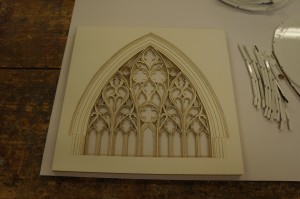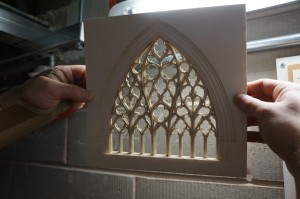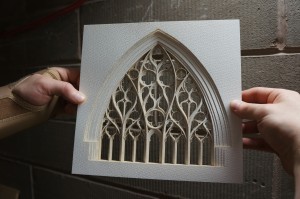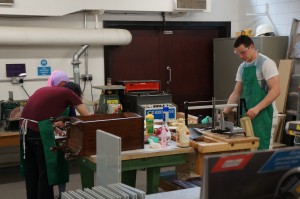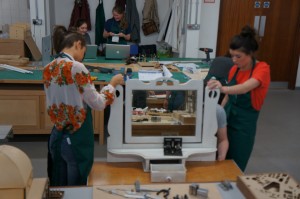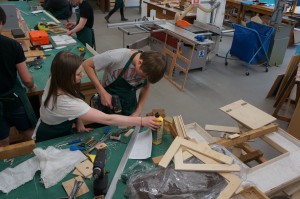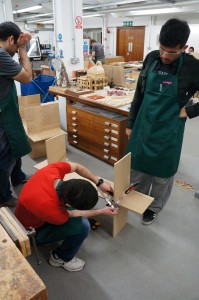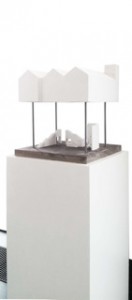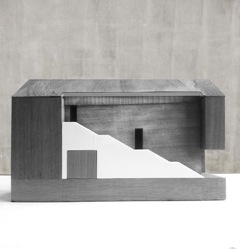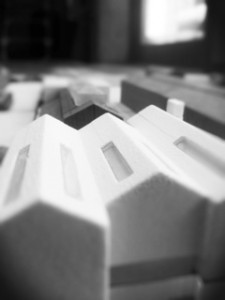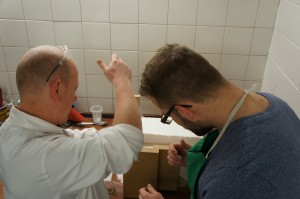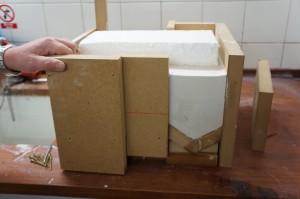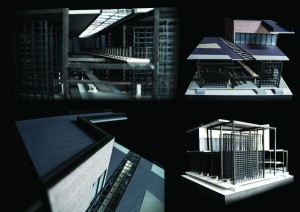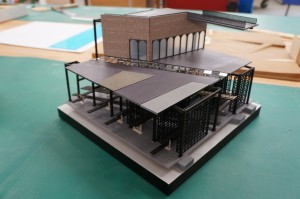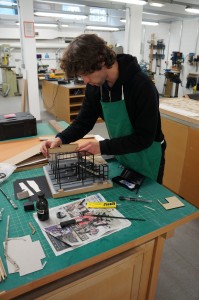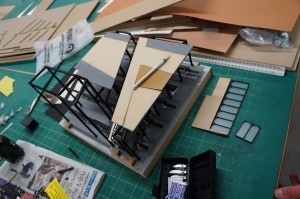Luke’s Year 6 thesis focussed on a site at Green gate Square opposite Manchester Cathedral.
This laser cut development model to test a potential construction method for later models. In the end Luke decided against taking this idea further for this project but this sample turned out really well. Here Luke has layered up laser cut cartridge paper to mimic a stone sculpted Gothic style window. The results looked fantastic and go to show that with patience and experimentation when using machines can give a great range of results.
It’s always a good idea to experiment with these ideas at an early stage of your projects as they often lead to changes in your design and give great insight into success and failures of specific elements.

